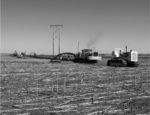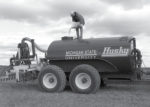Advertise Follow Us
Seeding & Planting
After 32 Years Of No-Tilling, Truths Emerge From His Fields
Paul Schaffert has faced his no-till challenges through the decades, and he’s learned from both the ups and the downs. He offers his advice here.
Read More
No-Tillers Using New Corn Hybrids, But Selection Still Requires Care
The cost of seed corn has skyrocketed, but some no-tillers and researchers report big gains in yields in side-by-side test plots.
Read More
Local No-Tillers Join To Create Research Farm
With funding from a variety of sponsors, they can investigate the practices that work well in their immediate area and prepare for the future with confidence.
Read More
What I've Learned from No-Tilling
Rotations, Equipment Adaptations Help Deliver Long-Term Success
Read More28 Critical Points To Consider Before No-Tilling Continuous Corn
Mindful of an emerging trend, an agricultural engineer offers guidelines to thoughtful decision-making for no-tillers thinking about leaping into monoculture corn.
Read More
No-Till And Organic Techniques Coming Together Out East
Thirty years of research, trial and error and changing attitudes, along with improved equipment, are setting the stage for grower success.
Read More
Waiting For Asian Soybean Rust Could Quickly Cost You Yield
The disease never showed up last year in most of the country after dire warnings, but believe it — rust could arrive in your fields and steal yield before you even know it’s there.
Read More
Seeding Cover Crops With Liquid Manure
No-tillers with livestock will want to study this one-pass system that saves time and money while improving soil quality.
Read More










